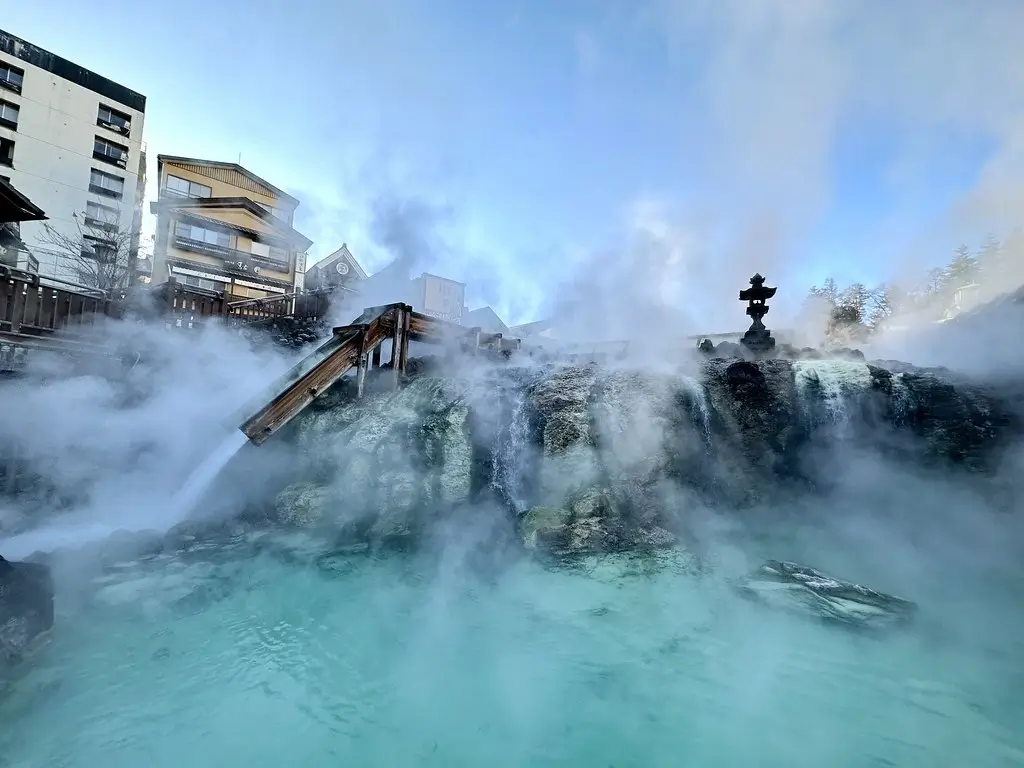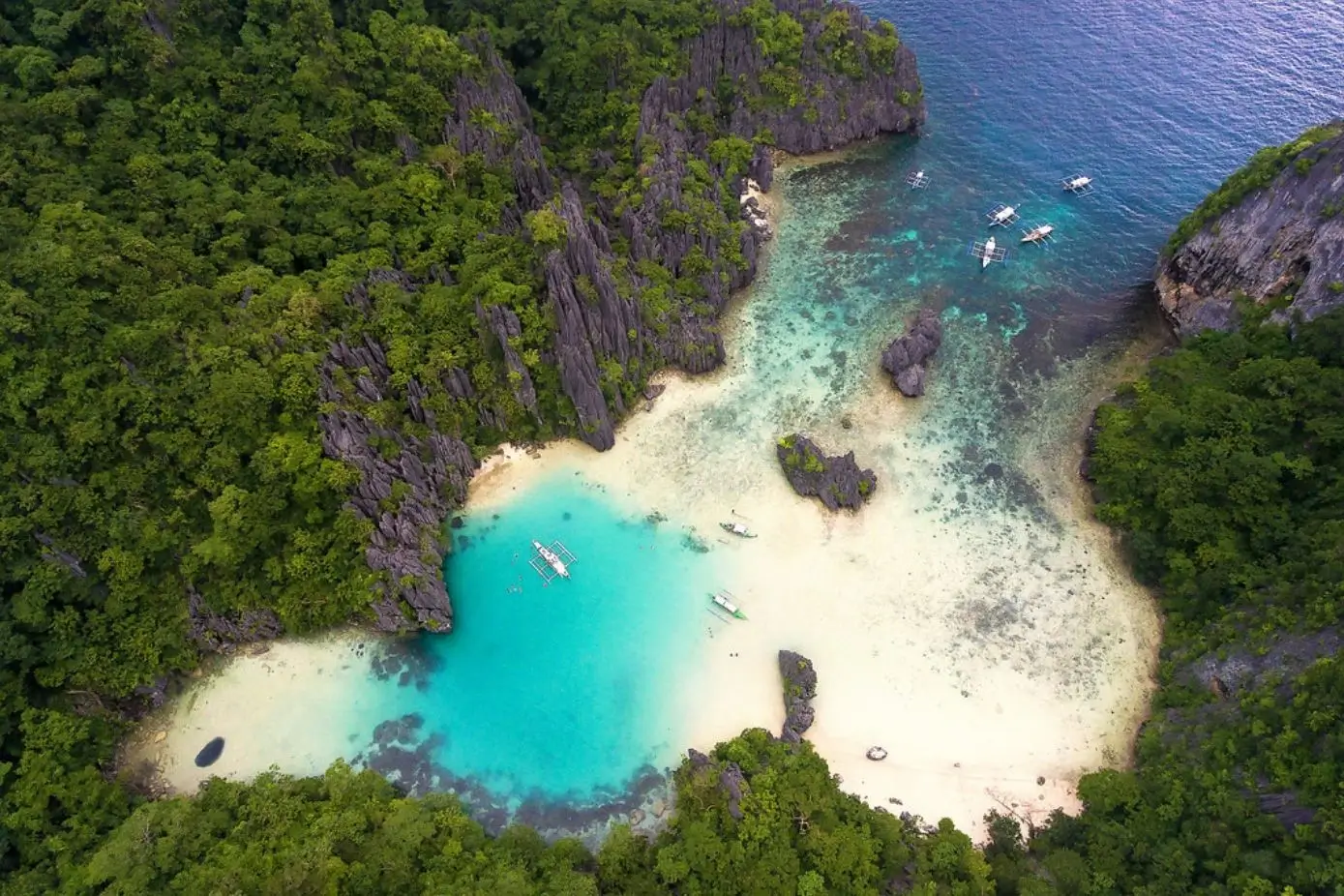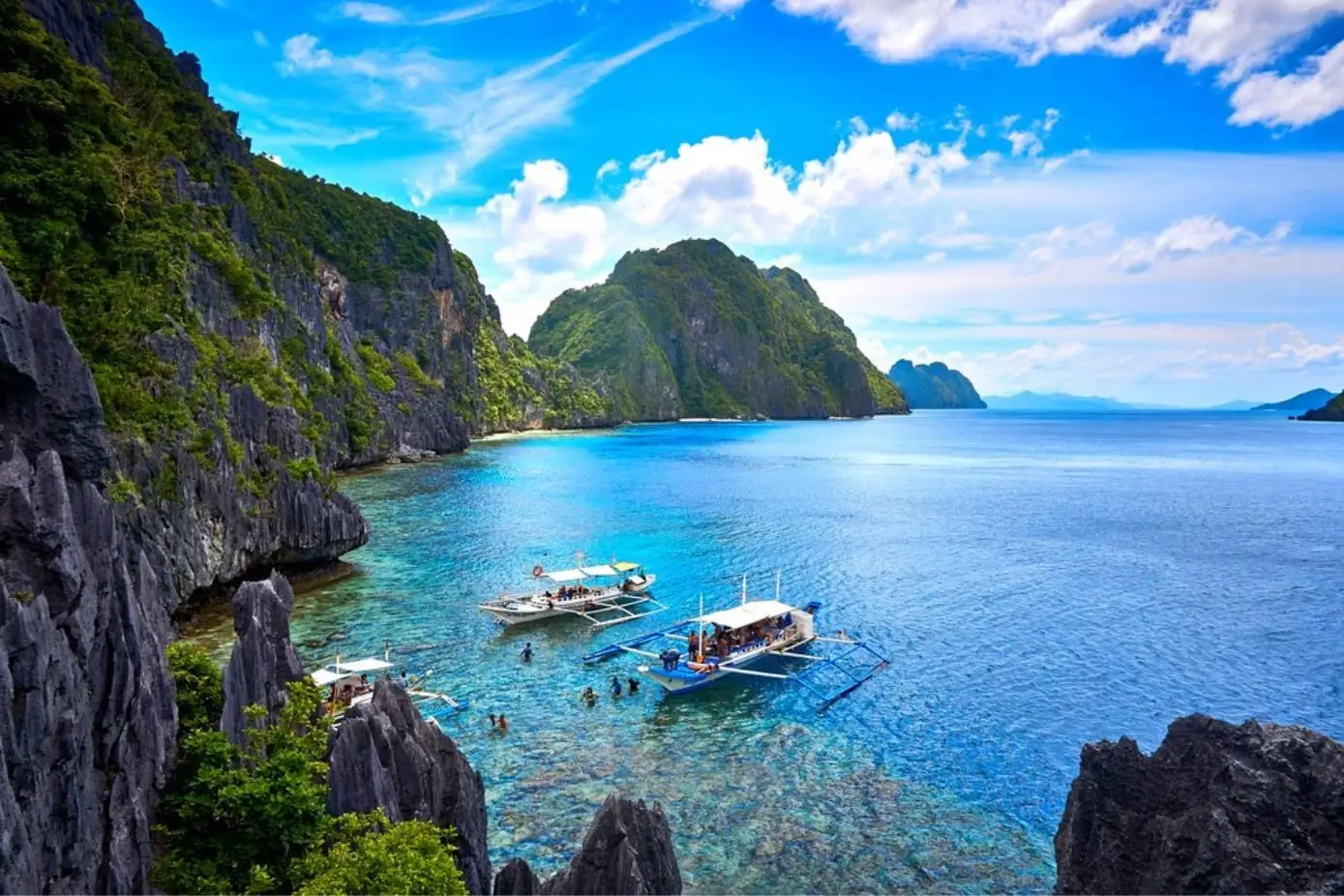Japan, a land steeped in ancient traditions and natural beauty, is renowned for its onsens (hot springs). These tranquil havens offer not just a soothing soak but a glimpse into a deeply rooted aspect of Japanese culture. For those seeking serenity and rejuvenation, here’s a guide to the top 10 best onsen in Japan that you simply must visit.
Best Onsens in Japan
- Kusatsu Onsen, Gunma Prefecture
- Beppu Onsen, Oita Prefecture
- Hakone Onsen, Kanagawa Prefecture
- Noboribetsu Onsen, Hokkaido
- Ibusuki Onsen, Kagoshima Prefecture
- Dogo Onsen, Ehime Prefecture
- Yufuin Onsen, Oita Prefecture
- Gero Onsen, Gifu Prefecture
- Arima Onsen, Hyogo Prefecture
- Nyuto Onsen, Akita Prefecture
Kusatsu Onsen, Gunma Prefecture

Kusatsu Onsen in Gunma Prefecture stands as one of Japan’s most renowned hot spring resorts, celebrated for its abundant and highly acidic waters that are believed to have exceptional healing properties.
Why is Kusatsu Onsen Special?
- Sulfuric Hot Springs: The sulfuric nature of the waters is known for its therapeutic effect, particularly beneficial for skin ailments and muscle pain.
- Abundant Flow: Kusatsu boasts one of the highest natural flow rates of hot spring water in all of Japan, ensuring a constant supply of fresh, potent waters.
The Yubatake: Heart of Kusatsu
- The Centerpiece of the Town: The Yubatake, meaning ‘hot water field’, is a symbol of Kusatsu, where hot water flows through wooden channels, cooling it before it reaches the public baths.
- Night Illumination: At night, the Yubatake is beautifully illuminated, creating a magical and serene atmosphere that attracts both bathers and photographers alike.
Beppu Onsen, Oita Prefecture

Beppu Onsen, nestled in the Oita Prefecture of Japan, stands as one of the country’s most famous and diverse hot spring resorts. It’s not just an onsen town but a veritable hot spring paradise, boasting the largest volume of hot water output in Japan and a wide array of unique bathing experiences.
Why is Beppu Onsen a Must-Visit?
- Variety of Hot Springs: Beppu is renowned for its eight different types of hot springs, known locally as “Beppu Hatto,” each offering a unique bathing experience, from mud baths to sand baths.
- Thermal Attractions: The town is home to numerous geothermal attractions, including boiling ponds and spouting geysers, most notably the “Hells of Beppu” – a collection of spectacular hot springs meant for viewing rather than bathing.
Experiencing Beppu’s Unique Baths
- Sand Baths: A distinctive feature of Beppu where bathers are buried in naturally heated sand, offering deep warmth and relaxation.
- Steam Baths: These baths utilize the natural steam from hot springs to create a sauna-like experience, known for detoxifying and relaxing effects.
Exploring the “Hells of Beppu”
- Sightseeing Hot Springs: The “Hells of Beppu” consist of several hot springs, each with its unique characteristics. Umi Jigoku (Sea Hell) is famous for its cobalt blue water, while Chinoike Jigoku (Blood Pond Hell) stands out for its red, blood-like water.
- Cultural Significance: These hot springs are not only natural wonders but also hold cultural significance, representing the Buddhist concept of hell.
Hakone Onsen, Kanagawa Prefecture
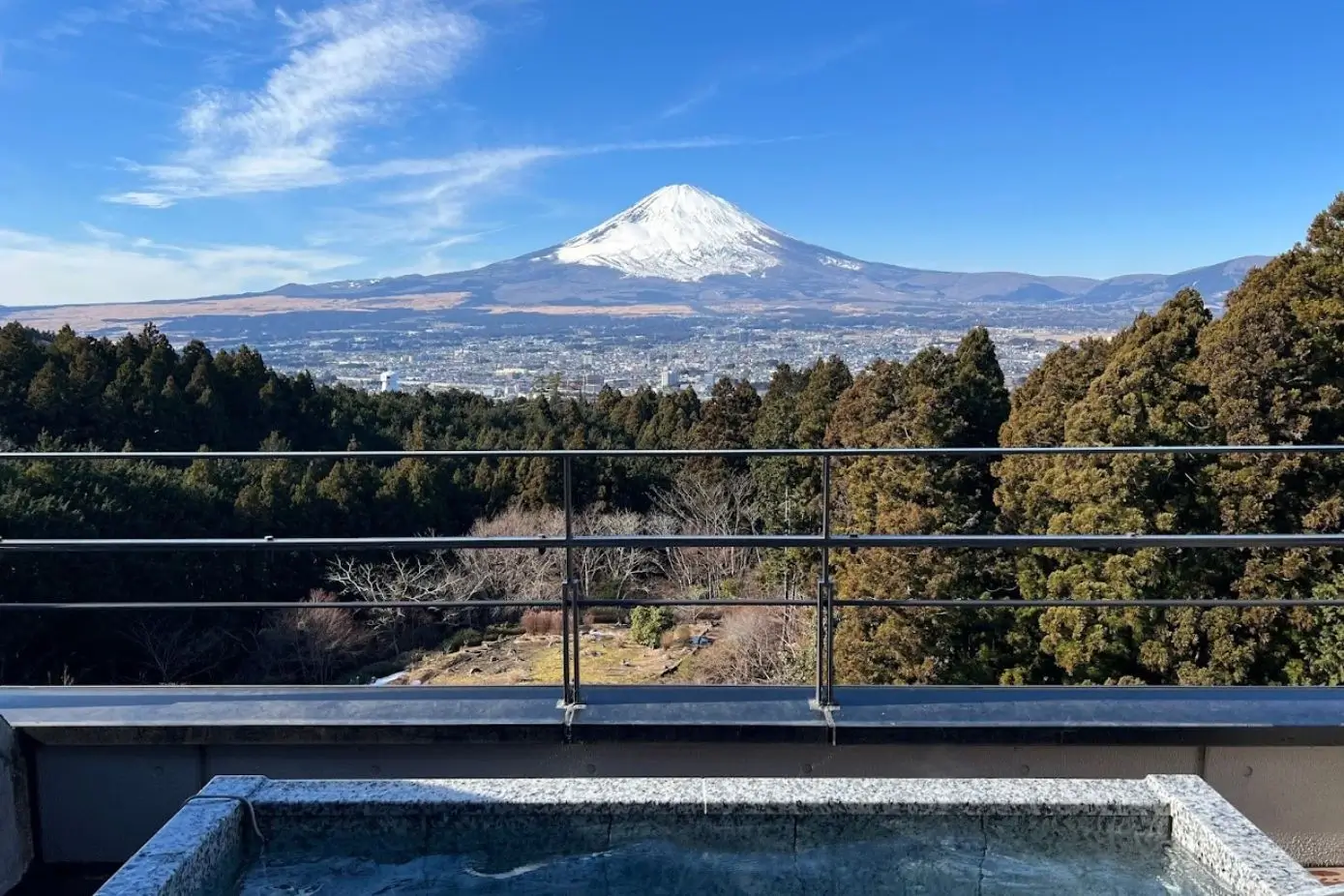
Hakone Onsen, located in the picturesque Kanagawa Prefecture, is one of Japan’s most popular hot spring destinations. Offering a scenic escape with stunning views of Mount Fuji, Hakone provides a perfect blend of natural beauty and relaxing hot springs.
Why Hakone Onsen Stands Out?
- Proximity to Tokyo: Just a short trip from Japan’s bustling capital, Hakone Onsen is an ideal retreat for both locals and tourists.
- Views of Mount Fuji: Many onsens in Hakone boast breathtaking views of Mount Fuji, providing a serene backdrop for a relaxing soak.
Experiencing Hakone’s Hot Springs
- Variety of Onsens: From public bathhouses to private onsens in ryokans, Hakone caters to all preferences, offering indoor and outdoor baths.
- Luxurious Accommodations: Many establishments in Hakone combine onsen experiences with luxurious accommodations, making it a popular choice for those seeking comfort and relaxation.
Noboribetsu Onsen, Hokkaido

Noboribetsu Onsen, situated on the northern island of Hokkaido, is renowned for being one of Japan’s most spectacular hot spring resorts. Nestled in the heart of Hokkaido’s volcanic landscape, it offers a unique onsen experience surrounded by dramatic natural scenery.
Why is Noboribetsu Onsen Unique?
- Diverse Mineral Composition: The hot springs here are fed by the volcanic activity of Hell Valley (Jigokudani), resulting in a rich variety of mineral compositions in the waters.
- Therapeutic Properties: Each spring has different health benefits, ranging from skin healing to easing muscle and joint pain.
Exploring Jigokudani (Hell Valley)
- Dramatic Landscape: Jigokudani, the source of Noboribetsu’s hot springs, presents a dramatic landscape with steaming vents, sulfurous streams, and a striking, otherworldly appearance.
- Walking Trails: Visitors can explore walking trails around Hell Valley to observe the stunning volcanic activity and scenic views.
Ibusuki Onsen, Kagoshima Prefecture
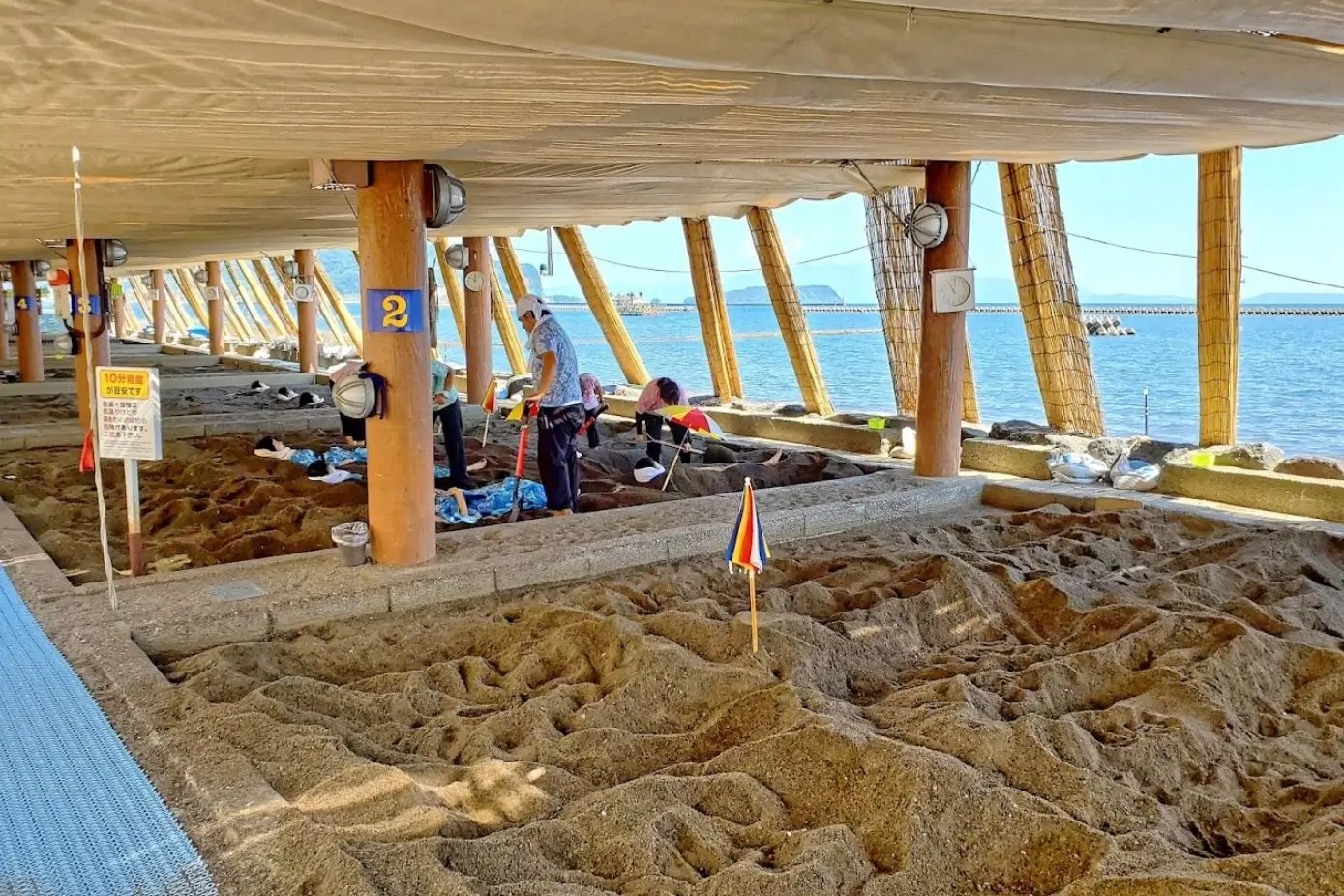
Located in the scenic Kagoshima Prefecture, Ibusuki Onsen offers a distinctive onsen experience that sets it apart from other hot spring resorts in Japan. Known for its natural sand baths, Ibusuki has become a must-visit destination for those seeking a unique and therapeutic bathing experience.
The Allure of Ibusuki Onsen
- Natural Sand Steam Baths: Ibusuki is famed for its sunamushi or sand steam baths, where bathers are buried in naturally heated sand by the beach. This unique method of bathing harnesses the geothermal heat of the area.
- Health Benefits: The sand baths are known for their deep heat, which helps in improving circulation, relieving muscle aches, and promoting overall relaxation.
Experiencing Ibusuki’s Sand Baths
- The Process: Bathers wear yukatas (light cotton kimonos) and lie down on the sand. Staff then cover them with warm, volcanic sand, leaving them to relax in the natural steam bath.
- Duration: The sand bath experience typically lasts for about 10 to 20 minutes, after which bathers rinse off in an onsen bath.
Dogo Onsen, Ehime Prefecture
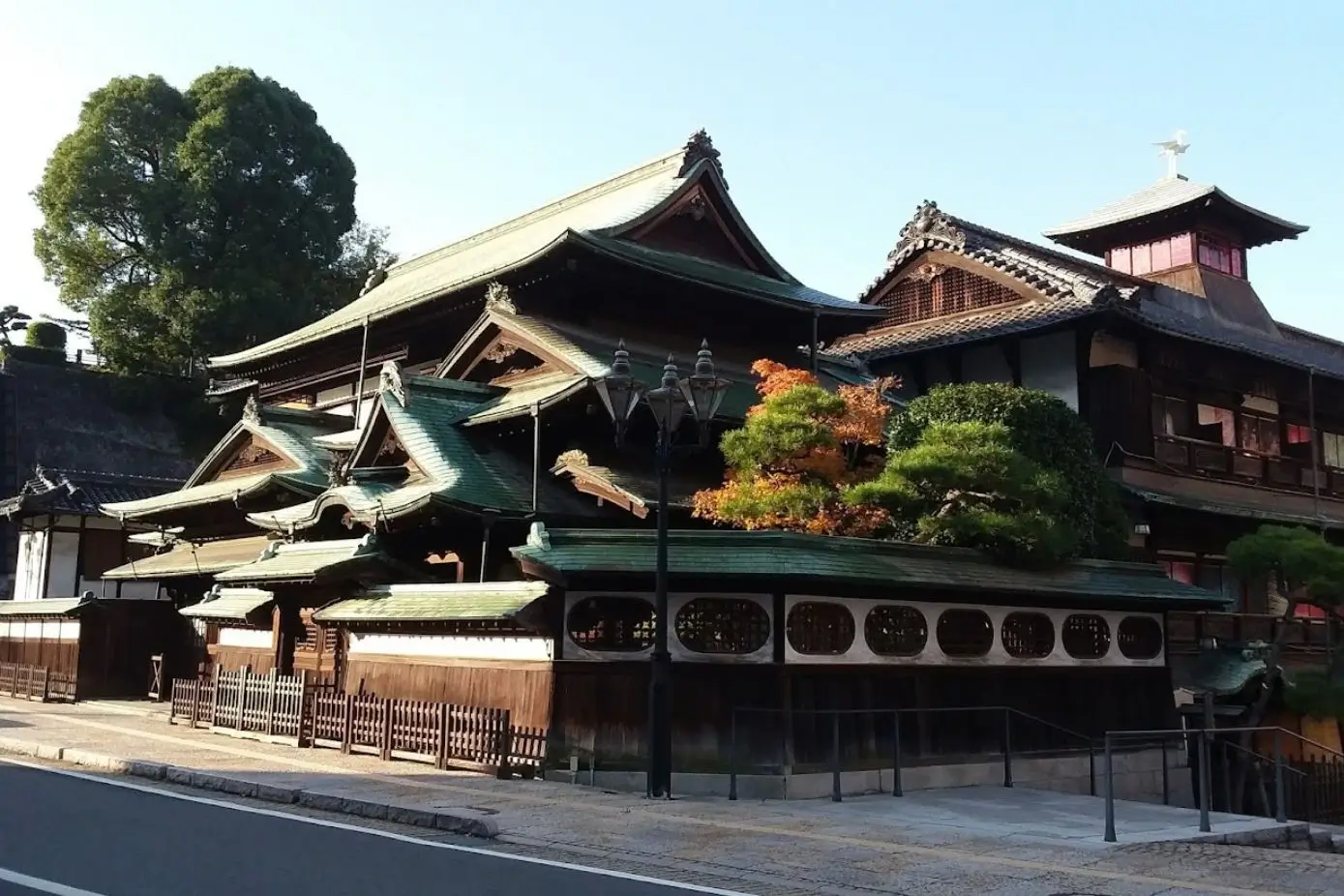
Dogo Onsen, located in the Ehime Prefecture of Shikoku, is one of Japan’s oldest and most celebrated onsen in Japan, boasting a history that spans thousands of years. This historic onsen is not only a place for relaxation but also a living piece of Japanese culture.
The Historical Significance of Dogo Onsen
- Ancient Heritage: Believed to be over 3,000 years old, Dogo Onsen has been a destination for healing and rejuvenation since ancient times. It’s steeped in mythology and mentioned in some of Japan’s oldest texts.
- Inspiration for ‘Spirited Away’: The onsen’s main bathhouse, Dogo Onsen Honkan, is said to have inspired the bathhouse in the famous Studio Ghibli film, ‘Spirited Away.’
Dogo Onsen Honkan: A Cultural Icon
- Architectural Marvel: The Dogo Onsen Honkan, built in 1894, is a masterpiece of Meiji Period architecture. It features intricate wooden designs and traditional Japanese motifs.
- Bathing Experience: The Honkan offers several public baths and private rooms, each with its history and charm.
Yufuin Onsen, Oita Prefecture
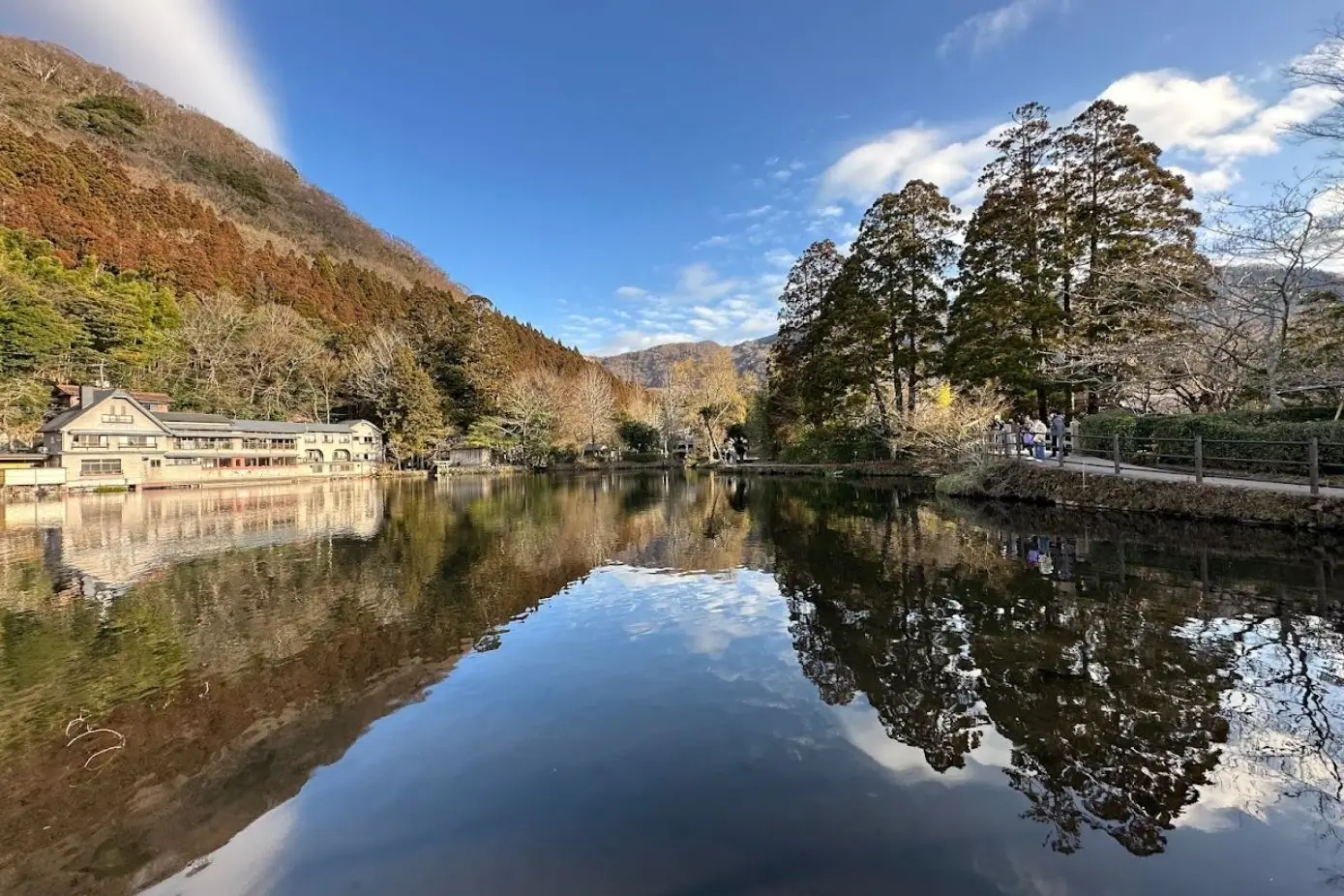
Yufuin Onsen, situated in Oita Prefecture on the island of Kyushu, offers a unique blend of scenic beauty and relaxing hot springs. This charming onsen town, set against the backdrop of Mount Yufu, provides a tranquil escape from the hustle and bustle of daily life.
The Charm of Yufuin Onsen
- Picturesque Setting: Surrounded by lush greenery and the striking Mount Yufu, Yufuin Onsen is renowned for its natural beauty and serene atmosphere.
- Quality of Waters: The onsen waters here are known for their therapeutic properties, providing relief for a variety of ailments and offering a soothing experience.
Exploring Yufuin Town
- Quaint Streets: The main street of Yufuin, Yunotsubo Kaido, is lined with quaint shops, cafes, and galleries, perfect for strolls and local shopping.
- Culinary Delights: Visitors can indulge in local delicacies, including Bungo beef and sweet treats like Yufuin roll cake.
Gero Onsen, Gifu Prefecture
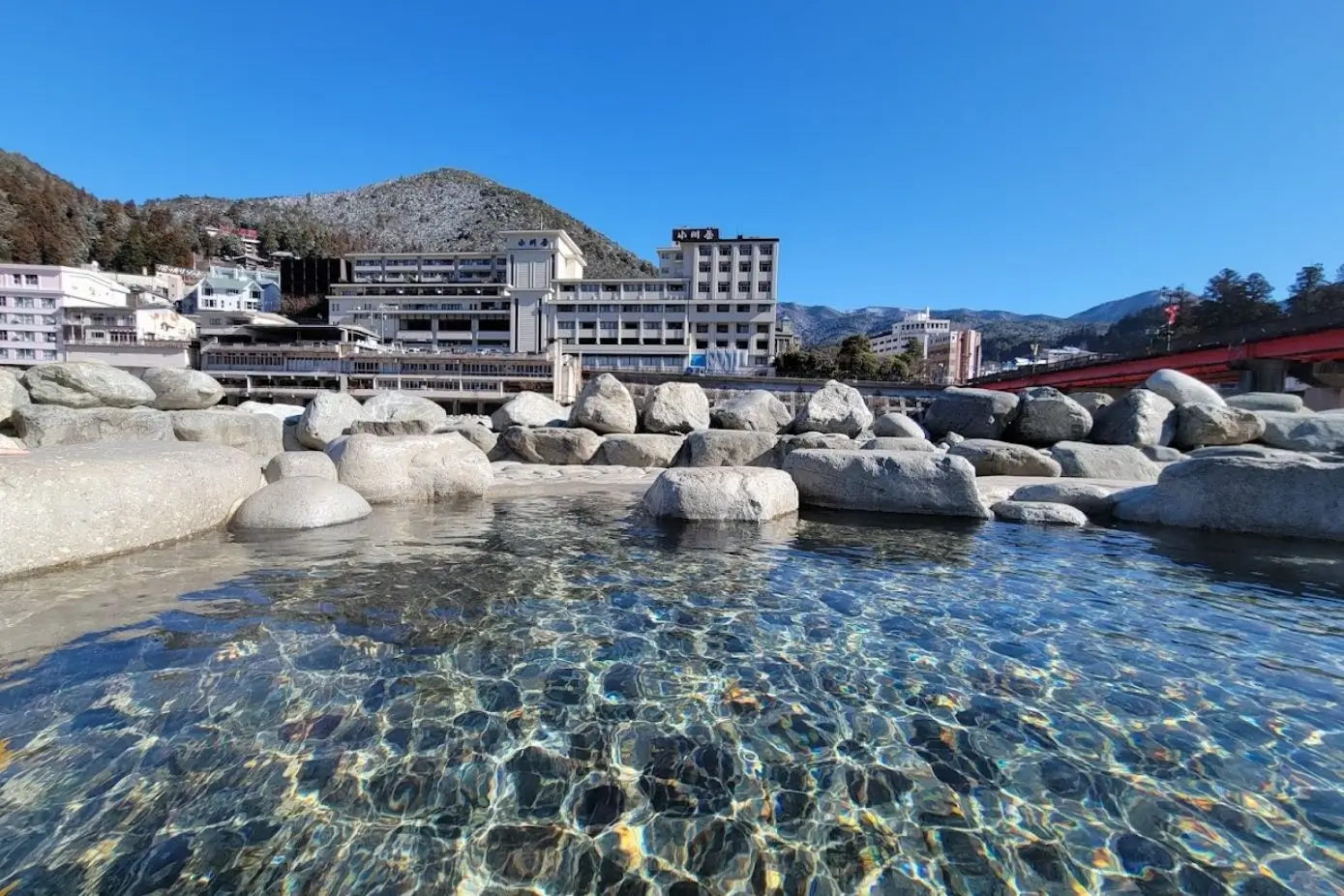
Gero Onsen, nestled in the picturesque Gifu Prefecture, is celebrated as one of Japan’s top three onsens. Revered for its therapeutic hot springs, Gero Onsen is a favorite destination for those seeking both healing and relaxation in a traditional Japanese setting.
The Therapeutic Appeal of Gero Onsen
- Rich Mineral Waters: The hot spring waters of Gero Onsen are known for their high mineral content, believed to provide health benefits such as improved circulation and relief from joint pain.
- Reputation for Healing: Long regarded as a healing destination, Gero Onsen has a history of attracting visitors seeking relief from various ailments.
Experiencing Gero Onsen Town
- Traditional Charm: Gero Onsen town retains a traditional charm. With ryokans (Japanese inns), shops, and local eateries lining its streets, offering an authentic Japanese experience.
- Onsen-hopping Experience: The town offers the unique opportunity to try multiple hot springs. Use a ‘Yumeguri Tegata’ pass that allows access to several onsens.
- Footbaths and Walking Paths: Scattered throughout the town are numerous free footbaths. It’s perfect for a relaxing soak while exploring the area.
Arima Onsen, Hyogo Prefecture
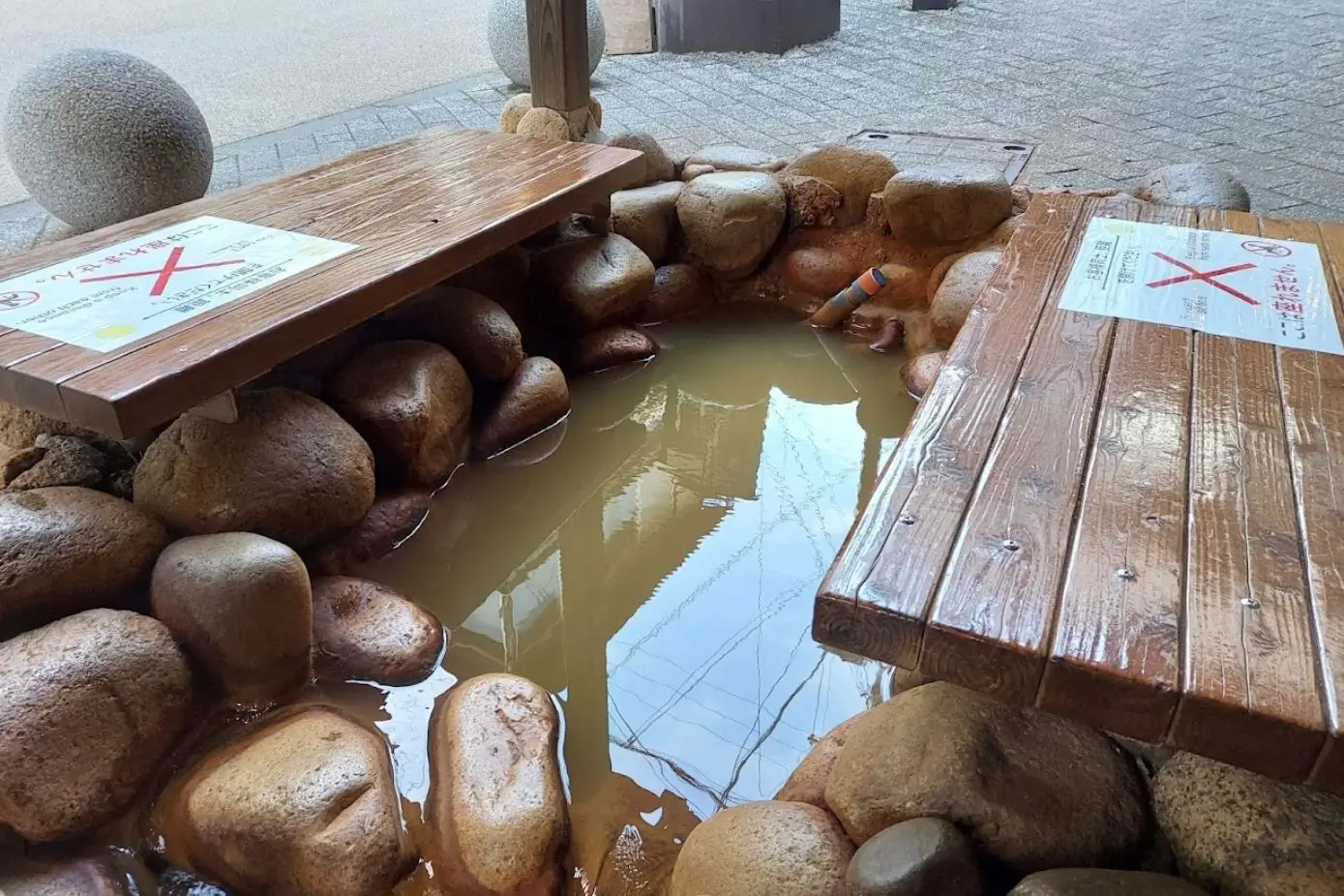
Arima Onsen, located in the tranquil mountains of Hyogo Prefecture, is one of Japan’s oldest and most prestigious hot spring resorts. Known for its unique mineral-rich waters and historic charm, Arima Onsen is a cherished destination that offers a blend of traditional Japanese culture and natural beauty.
Why is Arima Onsen a Must-Visit?
- Historical Significance: With a history dating back over a thousand years, Arima Onsen has been a favored retreat for samurai, emperors, and literary figures throughout Japanese history.
- Unique Water Qualities: The onsen is famous for its two types of hot spring waters: the “Kinsen” (Gold water), rich in iron and salts, and the “Ginsen” (Silver water), high in radium and carbonate.
Exploring Arima Onsen Town
- Traditional Ambiance: The onsen town exudes a charming atmosphere with narrow lanes, wooden ryokans, and traditional shops.
- Culinary Delights: Visitors can savor local specialties such as Kobe beef and Arima Manju: a sweet bun filled with red bean paste.
Nyuto Onsen, Akita Prefecture
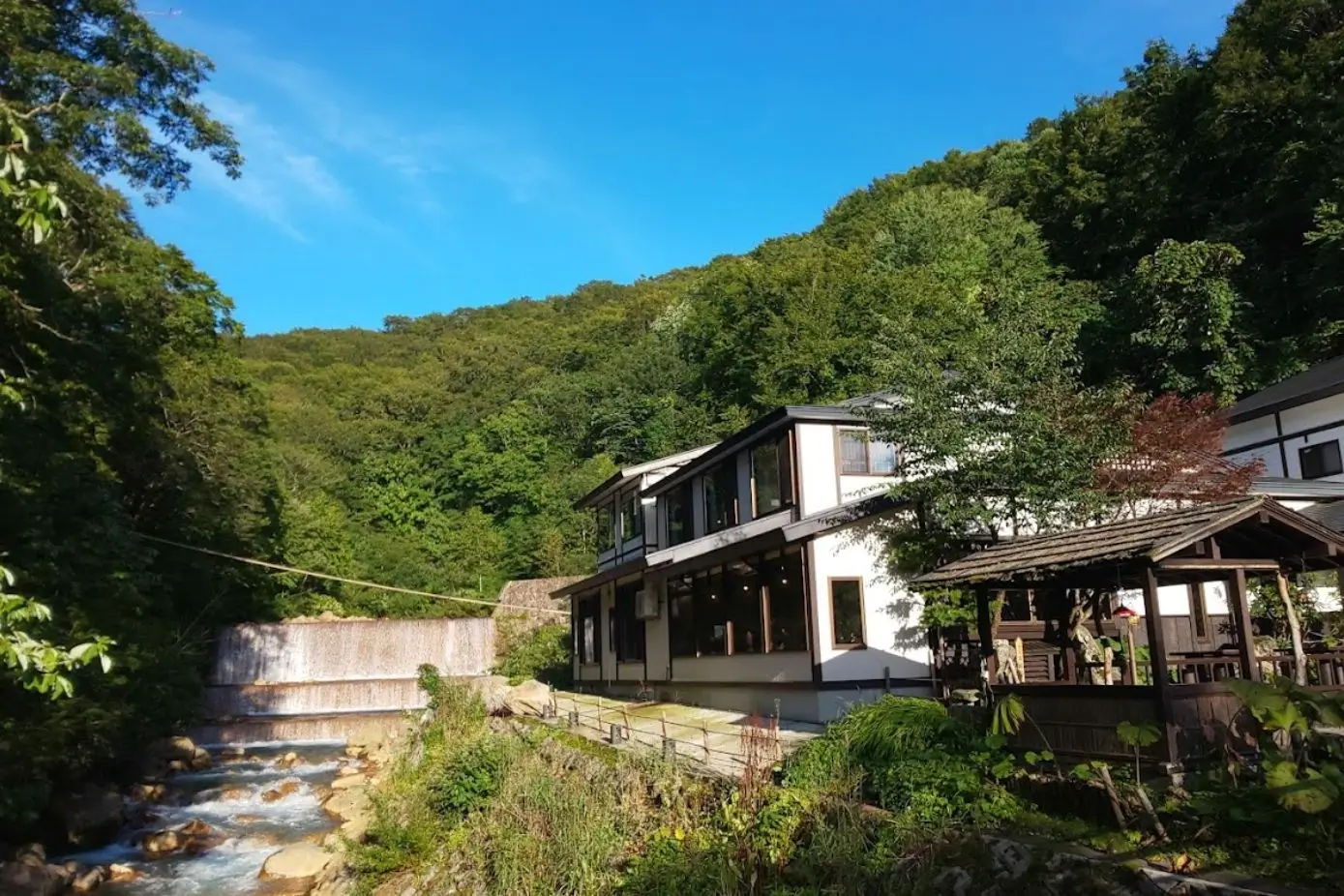
Tucked away in the mountains of Akita Prefecture, Nyuto Onsen offers a secluded and authentic onsen experience. Known for its rustic hot springs and serene natural setting, Nyuto Onsen is a hidden gem that promises tranquility and a connection with traditional Japan.
The Unique Appeal of Nyuto Onsen
- Rustic Ambiance: Unlike the more developed onsen towns, Nyuto Onsen maintains a rustic charm. With hot spring facilities set in traditional wooden buildings surrounded by dense forest.
- Mixed-Gender Bathing: Some of the onsens in Nyuto Onsen offer mixed-gender bathing (konyoku), allowing guests to enjoy the hot springs more communally and traditionally.
Exploring the Hot Springs of Nyuto Onsen
- Variety of Baths: Nyuto Onsen is home to several hot spring ryokans, each offering a unique bathing experience. From outdoor baths with scenic views to indoor wooden baths.
- Cloudy Waters: The hot spring waters in Nyuto Onsen are known for their cloudy appearance. They are rich in minerals, and offer therapeutic benefits.
Final Thoughts
Each onsen in Japan offers a unique experience, blending natural beauty with traditional Japanese hospitality. Whether you’re looking for a quick escape from the hustle of city life or a deep dive into Japan’s onsen culture, these top 10 onsens are a perfect starting point.
FAQ
Onsens can be enjoyed year-round, but winter is especially magical. For specific seasonal highlights, check the best time to visit Japan.
Most onsens provide towels and yukatas (casual kimonos). For onsen etiquette, refer to the ultimate guide for first-timers.
Some onsens may restrict entry for people with tattoos due to traditional beliefs. But there are tattoo-friendly onsens available.

